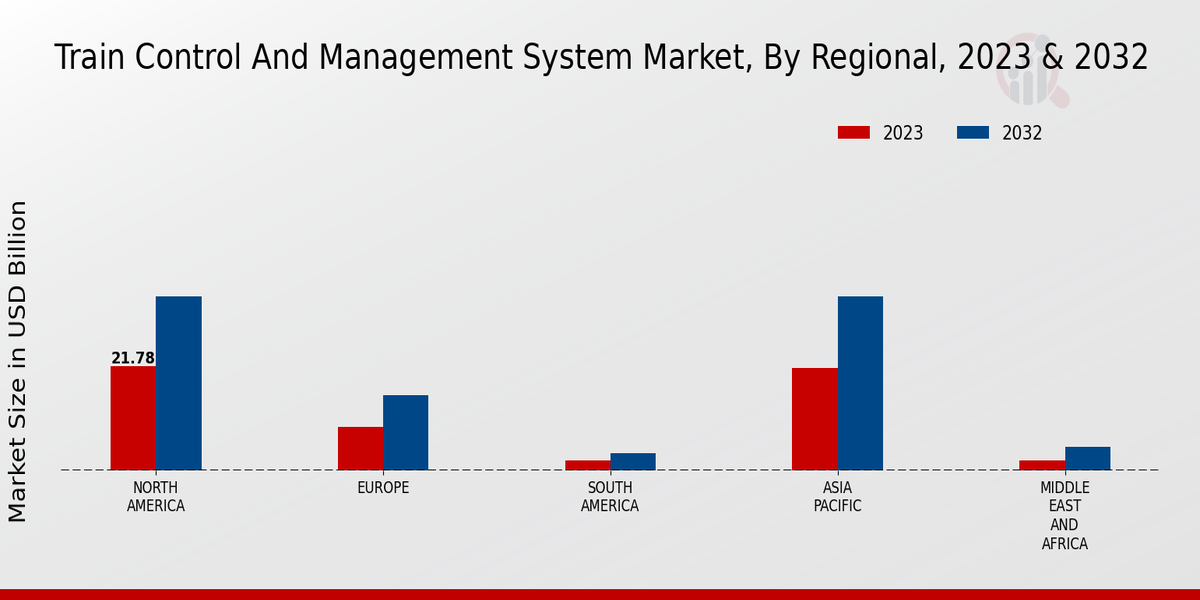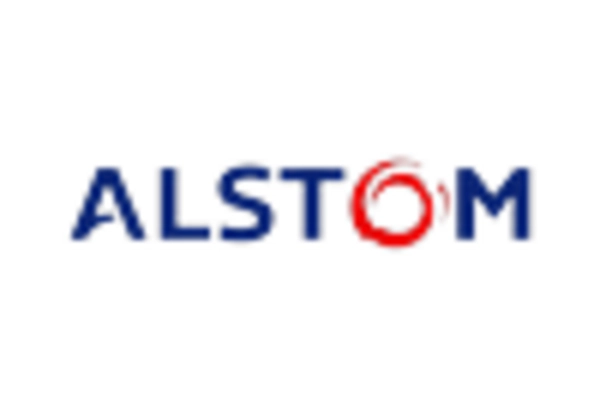Rising Focus on Safety and Security
Safety and security concerns are paramount in the Train Control And Management System Market, driving the adoption of advanced control systems. With increasing incidents of rail accidents and security threats, there is a pressing need for systems that enhance situational awareness and response capabilities. The integration of technologies such as automatic train protection and real-time monitoring systems is becoming standard practice. Market analysis indicates that investments in safety-related technologies are expected to rise significantly, as rail operators prioritize the protection of passengers and cargo. This focus on safety not only mitigates risks but also enhances the overall reliability of rail services, thereby attracting more users to rail transport.
Regulatory Support for Modernization
The Train Control And Management System Market benefits from robust regulatory support aimed at modernizing rail infrastructure. Governments are increasingly recognizing the importance of upgrading aging rail systems to meet contemporary safety and efficiency standards. Initiatives such as funding for technological upgrades and the establishment of safety regulations are fostering an environment conducive to investment in advanced train control systems. For instance, recent legislative measures have allocated significant budgets for rail modernization projects, which are expected to enhance the operational capabilities of rail networks. This regulatory backing not only encourages innovation but also ensures that rail operators are equipped with the latest technologies to improve service delivery.
Increased Investment in Rail Infrastructure
The Train Control And Management System Market is poised for growth due to increased investment in rail infrastructure. Governments and private entities are recognizing the strategic importance of rail transport in economic development and are committing substantial resources to enhance rail networks. This investment is not only aimed at expanding existing infrastructure but also at integrating advanced train control systems that improve efficiency and safety. Recent reports suggest that infrastructure spending in the rail sector is expected to reach unprecedented levels, driven by the need for modernization and capacity expansion. Such investments are likely to create a favorable environment for the adoption of advanced train control and management systems, thereby propelling market growth.
Growing Demand for Efficient Rail Operations
The Train Control And Management System Market is experiencing a surge in demand for efficient rail operations. As urbanization accelerates, the need for reliable and timely transportation solutions becomes paramount. Rail operators are increasingly adopting advanced control systems to enhance operational efficiency, reduce delays, and improve safety. According to recent data, the market for train control systems is projected to grow at a compound annual growth rate of approximately 7.5% over the next five years. This growth is driven by the necessity for rail networks to accommodate rising passenger numbers and freight volumes, thereby necessitating the implementation of sophisticated management systems that optimize train scheduling and resource allocation.
Technological Advancements in Communication Systems
Technological advancements in communication systems are transforming the Train Control And Management System Market. The integration of cutting-edge technologies such as 5G and IoT is enabling real-time data exchange between trains and control centers. This connectivity enhances operational efficiency and allows for proactive decision-making in train management. As a result, rail operators are increasingly investing in these advanced communication systems to streamline operations and improve service quality. The market for communication-based train control systems is projected to witness substantial growth, driven by the need for enhanced data analytics and operational insights that these technologies provide. This trend indicates a shift towards more intelligent and responsive rail systems.


















Leave a Comment